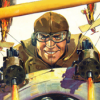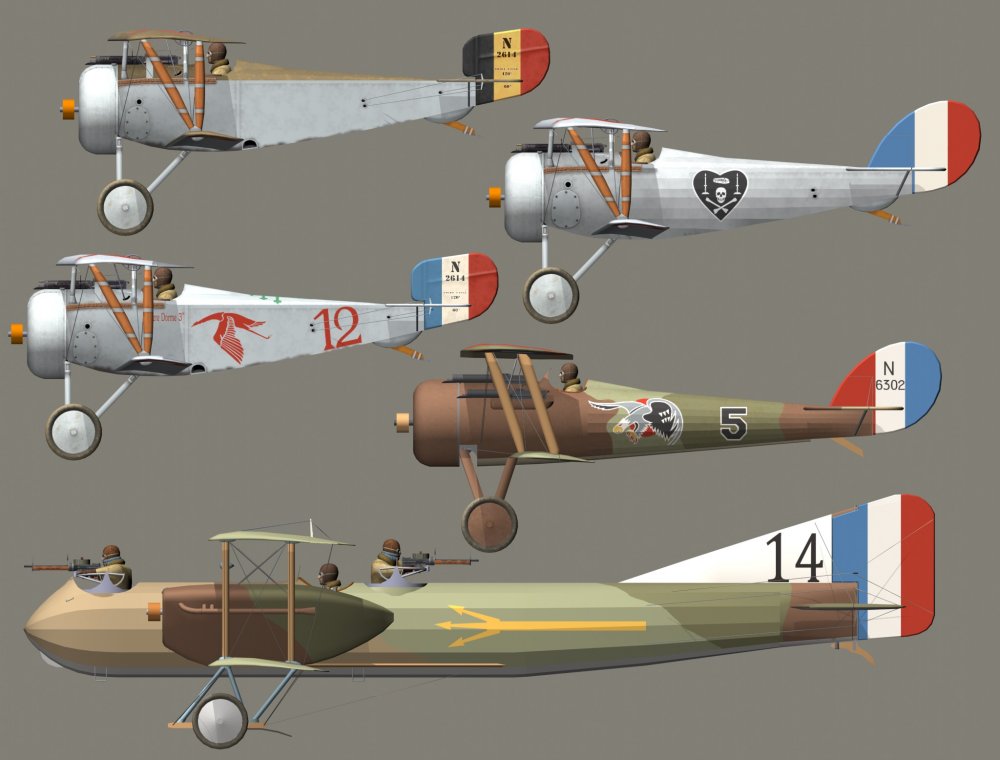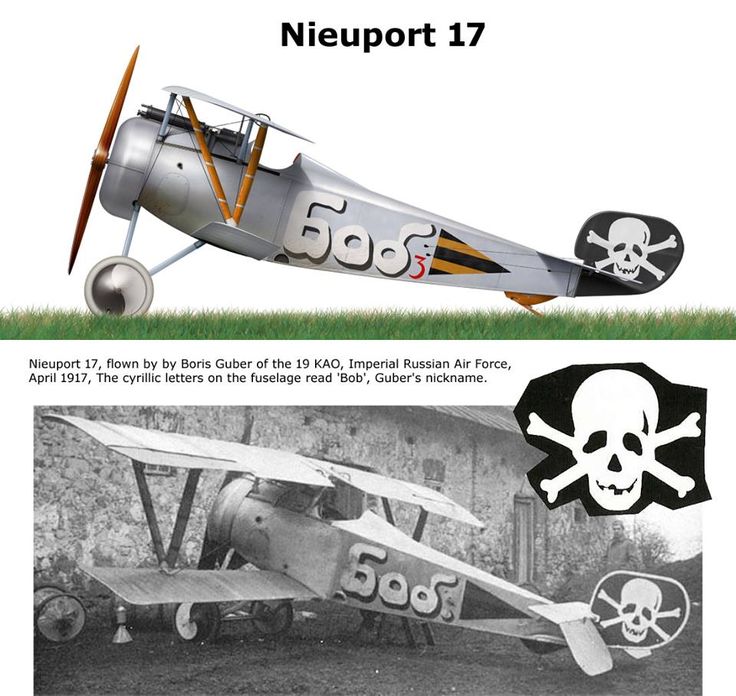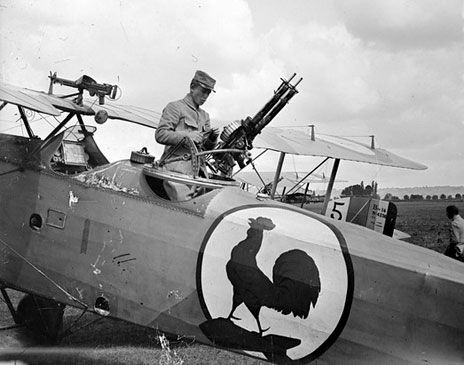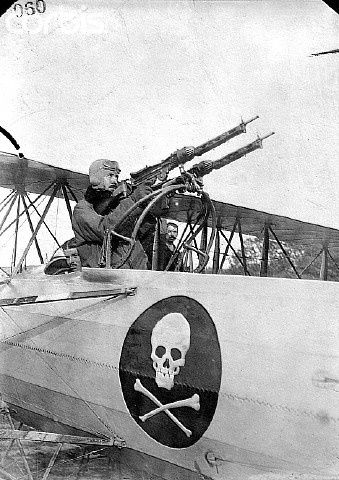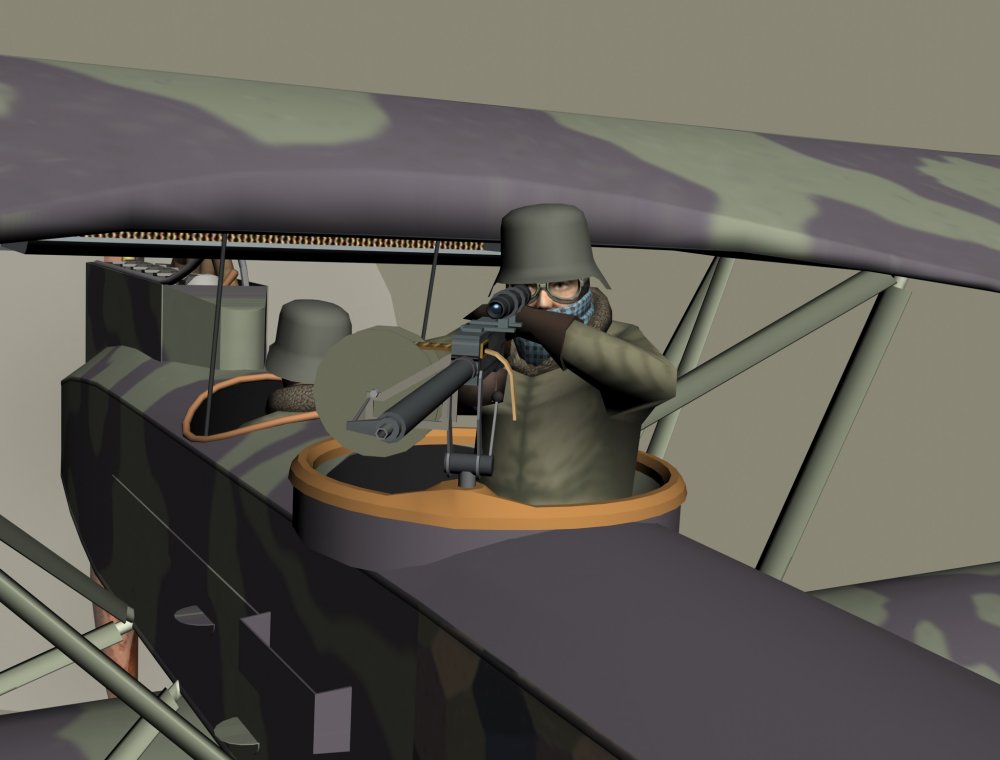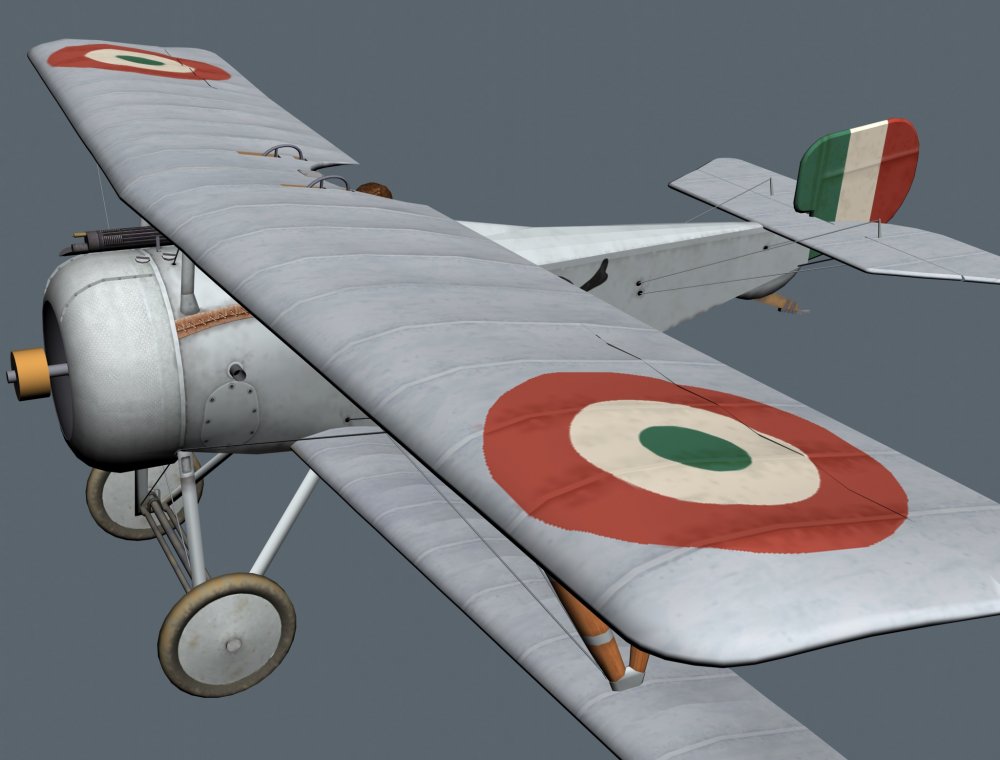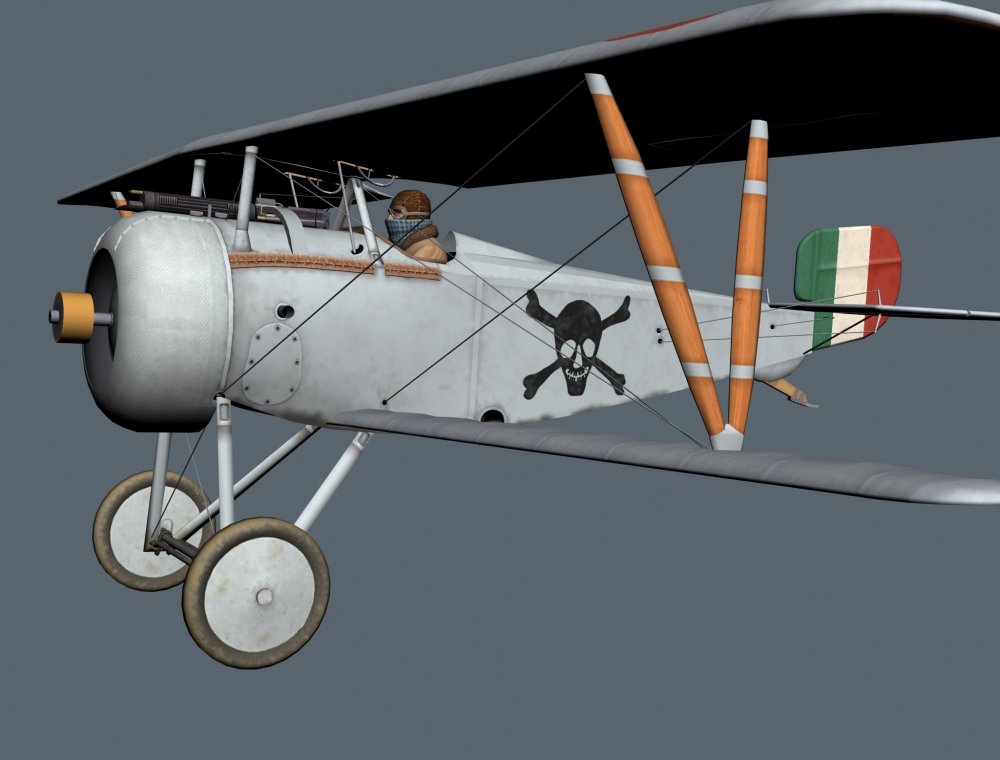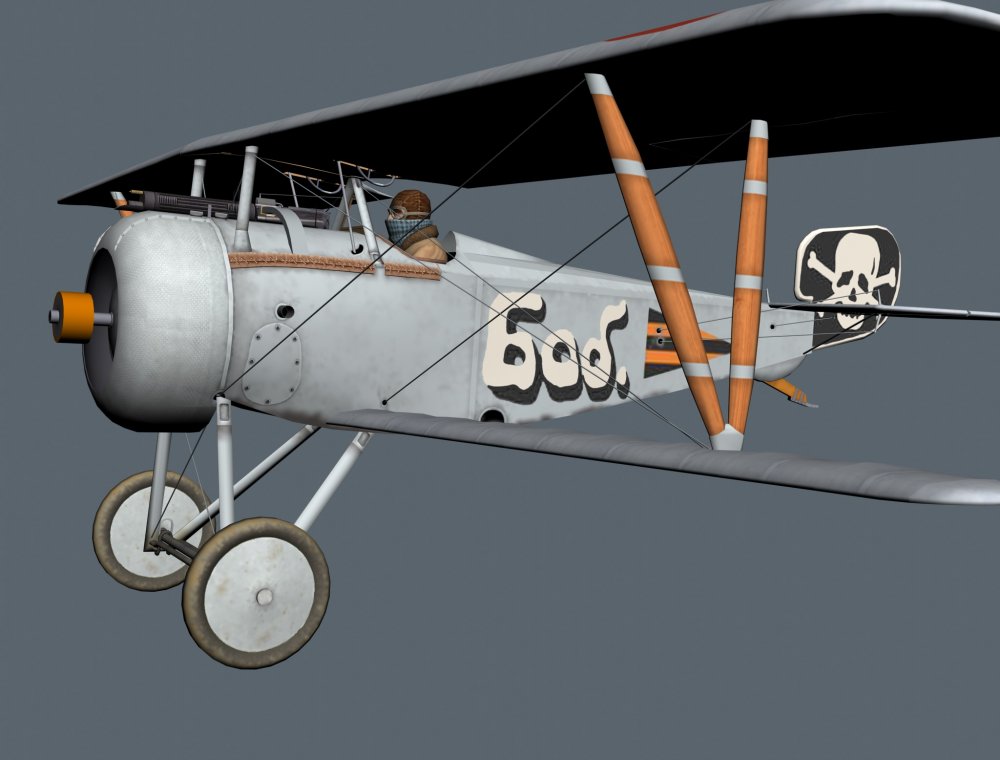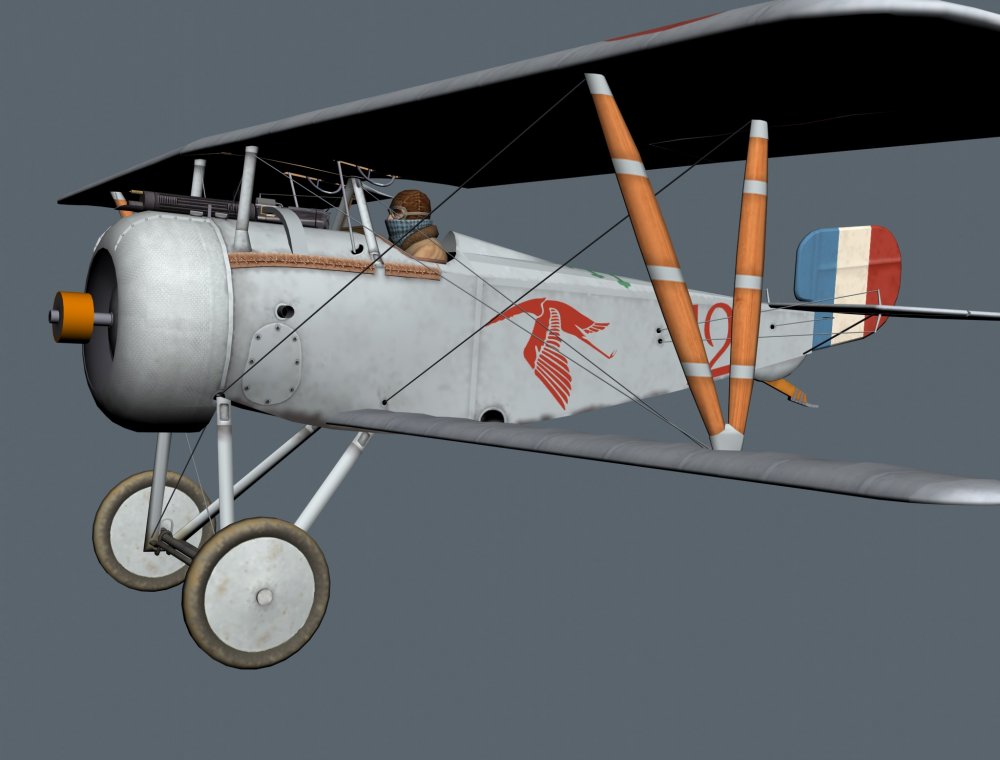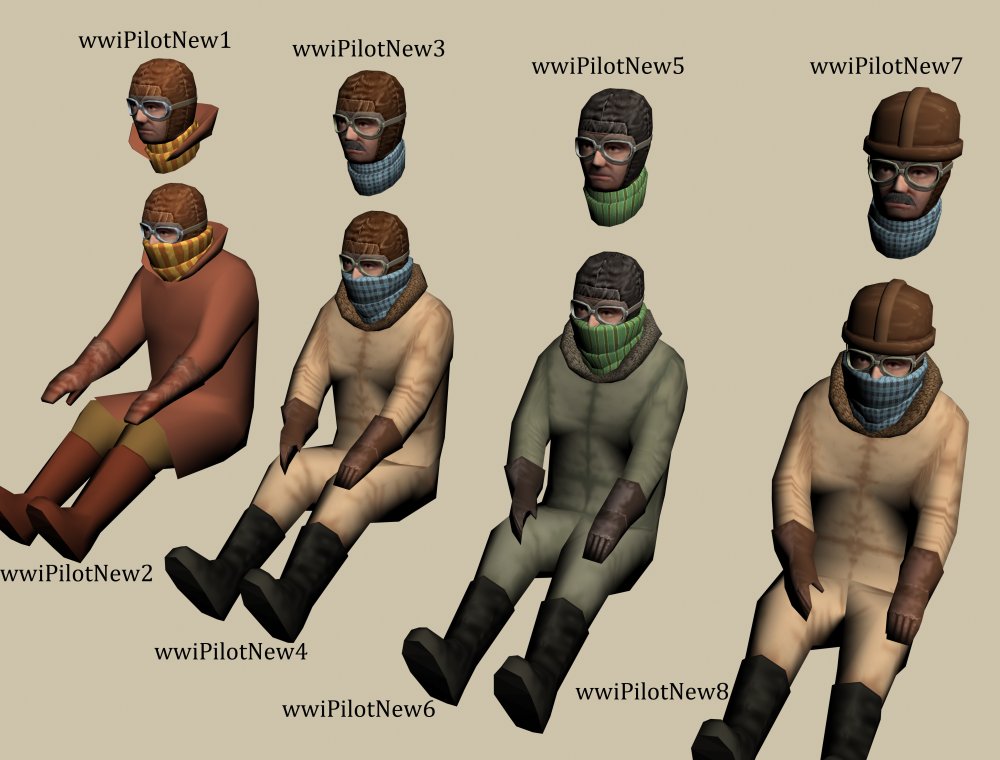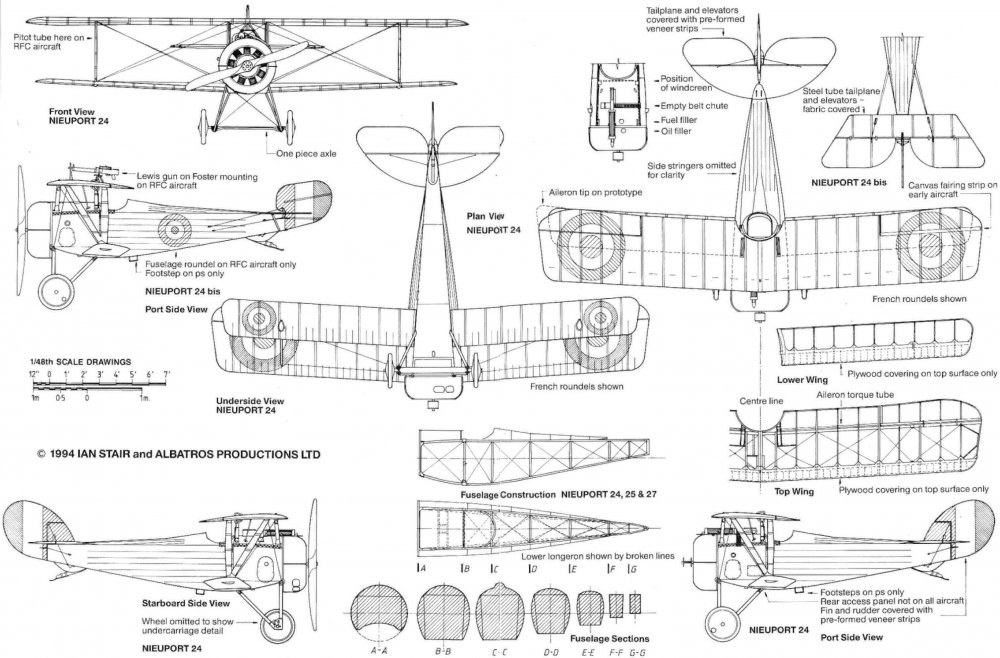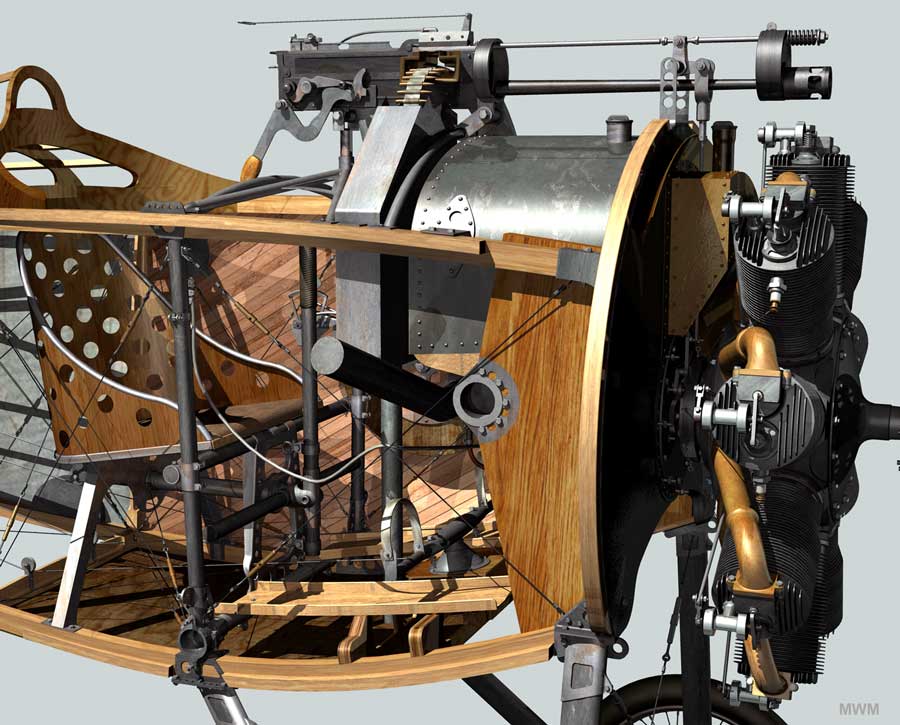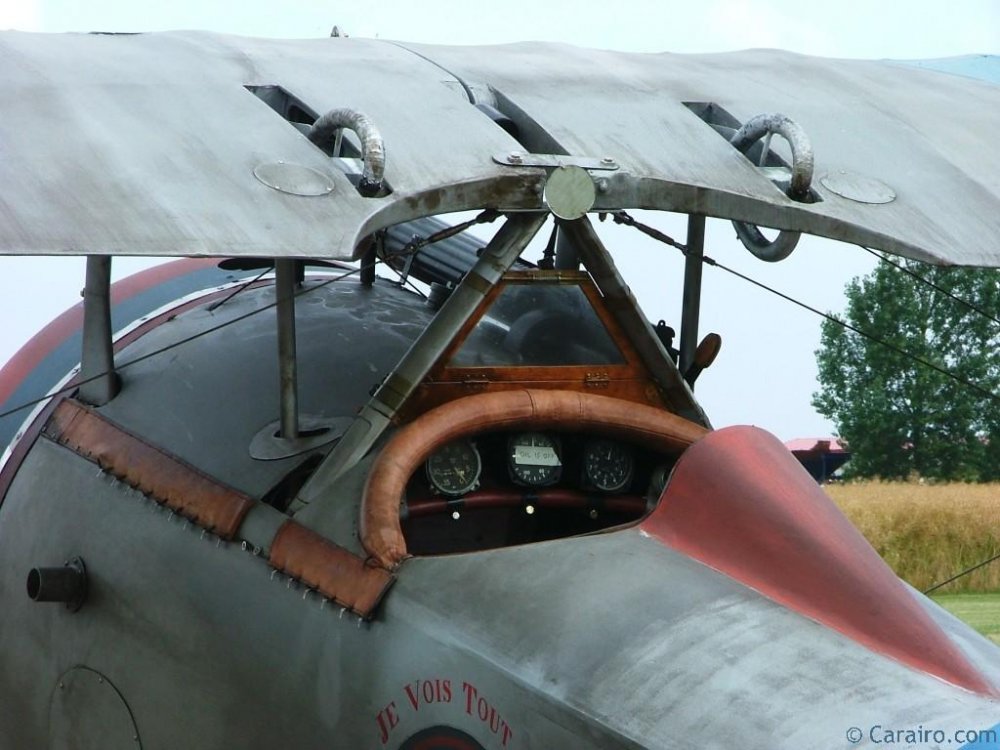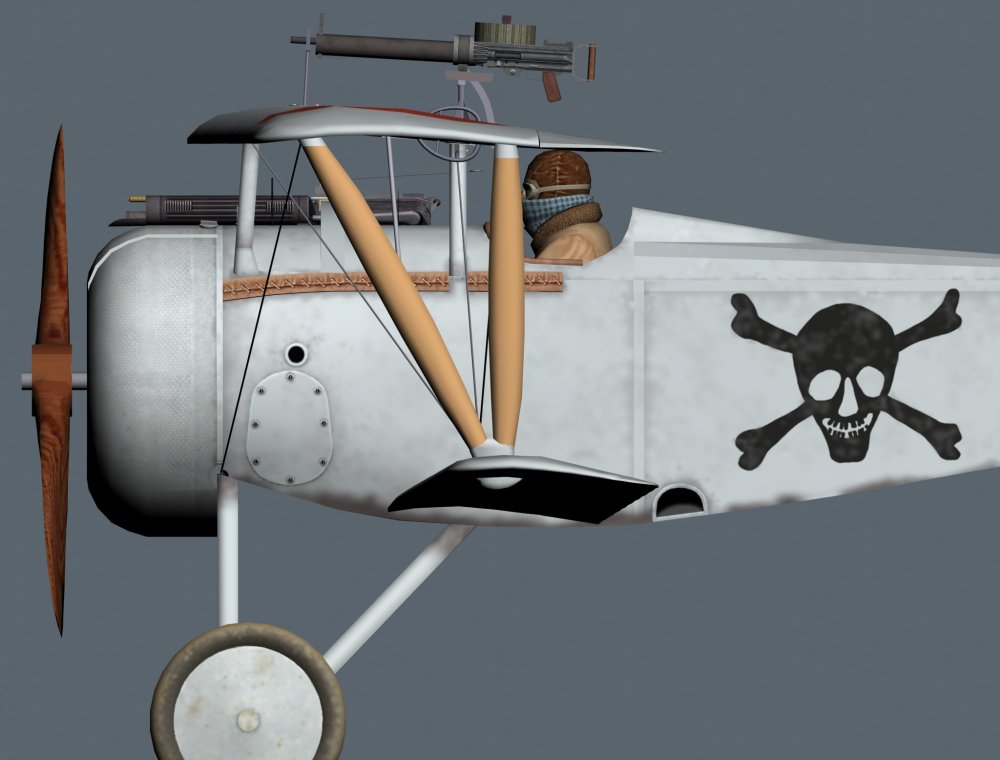-
Posts
2,813 -
Joined
-
Last visited
-
Days Won
93
Content Type
Profiles
Forums
Gallery
Downloads
Store
Everything posted by Geezer
-
Thanks. VonS and I are committed to raising the bar for First Eagles, but developing all new stuff is a slow process. We figure doing all the stuff we would like will take 1-2 years, so you have plenty of time to get a new rig!
-
- 700 replies
-
- 11
-

-

-
-
-
-
Have you tried UN-installing Laton's effects? I don't use them and don't have problems with muzzle flashes. Laton's effects date back to the early days of FE/FEG, so there may be some conflicts?
-
Found more info about aircraft guns and synchronizers. Rate of fire for the ground version of the Vickers gun was 450-550 rounds per minute (rpm). Minor adjustments to rpm could be made by tightening or loosening the fusee spring. Early British synchronizers (particularly the Ross gear) slowed the rpm to 350-400 rpm, and the situation was not improved until mid-1917 with the introduction of the Constantinesco gear. By war's end, Britain had manufactured 71,355 Vickers guns (both ground and air) while Colt had built 4,000 Vickers guns for aircraft use. Britain delivered 10,544 Vickers aircraft guns to France by December 1918. Birmingham Small Arms (UK) and Savage Arms Company (US) shipped at least 6,842 Lewis guns to France. Meanwhile, domestic French production ramped up during the war: Regis Darne delivering 3,266 Lewis guns and Milde delivering 1,100 Lewis guns. France used at least four different variants of the basic Lewis design, all differences being minor detail changes. Throughout the entire war, it proved difficult to balance gun production with airframe production. This probably accounts for the confusing variation in gun/synchronizer installations. For example, the Windsock data file for the Breguet 14 clearly shows delivered aircraft mounting overwing Lewis guns, instead of the standard Vickers gun. There simply were not enough aircraft Vickers guns to meet the demand, a situation that worsened in 1917 with the Allied introduction of two-gun fighters.
-
Check of couple of aircraft data inis. They should have something like this: [InternalGun1] SystemType=FIXED_GUN GunTypeName=7.92MM_SPANDAU_LMG08/15 InputName=FIRE_PRIMARY_GUN GunGroup=1 MuzzlePosition=-0.1260,0.405,0.62 LightPosition=-0.1260,0.405,0.62 AimAngles=0.0,0.0,0.0 MaxAmmo=500 EjectShells=FALSE EjectPosition= EjectVelocity= GunFireAnimationID=7 Synchronized=TRUE If they do, then the problem lies elsewhere. Do you have a GUNS sub-folder in your OBJECTS folder?
-
VonS has cranked out a large number of new aircraft folders containing all the essential files for Nieuport 17 and 23 aircraft - including separate Lewis gun versions for the RFC. Now, its my turn to crank out a bunch of N17/23 files, with and without Lewis guns. Because of the weight and drag penalty, very few Nieuports mounted both Vickers and Lewis guns.
-
A good observation! For much of the war the Allies experienced a chronic shortage of machine guns, particularly light weight aircraft guns. This problem gradually went away during 1917 with new factories coming online - and the introduction of the SPAD 13. On the subject of synchronizers, there are all kinds of internet references that state N17s were built with Vickers guns mounted on the center line. Only problem with that, is the French Ministry of Munitions never authorized production of any rotary engine synchonizer other than the Alkan-Hamy! Or, if it did, the records have not survived 100 years of turmoil. Again, I suspect the confusion arises from the British inability to develop a reliable synchronizer until mid-1917! Per Woodman's Early Aircraft Armament, the Brits employed the following systems, only one of which was equal to the Fokker/Alkan-Hamy gears: Vickers-Challenger: Bristol Scout, Sopwith 1-1/2 Strutter, BE12, RE8 Scarff-Dybovsky: Sopwith 1-1/2 Strutter, Sopwith Pup Sopwith-Kauper: Sopwith aircraft (particularly Camel), despite flaws was closest the Brits came to a standardized gear until Constantinesco gear was introduced in 1917 Ross: Sopwith 1-1/2 Strutter ARISAD: Nieuport 20, early RE8 Armstrong-Whitworth: FK8 Constantinesco: When the Brits finally got their act together - a year after everyone else - they did it right. Beginning with DH4 in Spring of 1917, the excellent "CC" gear was to have replaced all earlier gears, but it proved impossible to modify all British aircraft in the real world. The British duplication of effort is remarkable, particularly when you consider that most of the gears were not as good as the German/French gears. The best the Brits could field before mid-1917 was 2,750 Sopwith-Kauper gears, despite a tendency for the guns to "run away" and shoot up the propeller - they also had a high rate of mechanical failure due to excessive wear.
-
Unfortunately, I can't help. Pilots are separate LODs that the game attaches to the aircraft LOD - gunners are part of the aircraft LOD.
-
-
More... France obtained many Vickers guns from Britain, but most of France's guns were built by Colt or Marlin-Rockwell in the US. French Ministry of Munitions records show France had received 696 Lewis guns from Britain by December of 1916, 3,650 guns in 1917, and 3,300 in 1918. As this was inadequate for wartime expansion, large orders for Lewis guns were placed with Savage Arms in the US. The Savage Arms logo, an American Indian, was the inspiration for the Lafayette Escadrille squadron insignia. French factories were already working at capacity, so the French firm of Regis Darne, a cottage industry manufacturer of sporting rifles, was persuaded to produce Lewis guns - by 1916, they were producing five guns per week. The Darne version featured a wooden sheath around the gun barrel and gas actuation tube. Darne, profiting from others' mistakes, designed an inexpensive gas-operated gun suitable for synchronization, but the war ended before the new gun entered service. The US firm of Marlin also produced a gas-operated gun suitable for synchronization - Marlin guns were entering service when the war ended. Developed from the pre-war Colt Potato Digger gun, it was an excellent design, but the new Browning .30 gun was even better so the Marlin was withdrawn from post-war service in favor of the Browning.
-
Crawford: Thanks for the shot. One reason new aircraft take so long, is the extensive research and development necessary. Thought you guys might enjoy reading some of our correspondence: VonS: Have now test flown the latest iteration of the Nieu. 17 c.1 and it flies well, also looks great. I also made some tweaks and created a separate DUX variant for the 17 c.1, slightly lower ceiling and stiffer control input/reaction on that one (attached below). Geezer: Your thorough attention to detail is commendable. I love it! Looks like the DUX N17 should be a separate release? Along those lines, what are your thoughts concerning Lewis gun armed N17s, as they were not the production standard but were a depot/field mod, primarily by the British. I dug out my definitive reference - Early Aircraft Armament (Woodman) - and it paints a rather complex picture about French and British aircraft armament. When war began, the French did not produce/use either the Vickers or Lewis gun and vainly attempted to use their Hotchkiss gun for aircraft use, but failed as it was too heavy and gas-operated. Because of its light weight, Britain and France then preferred the Lewis for aircraft use, and ignored the fact it's gas operation was not suitable for synchronization; they wasted months trying to develop a practical system. The most practical Lewis gear was developed by Sergent-Mecanicien Alkan in early 1916, but it suffered from a low rate of fire resulting from synchronizing engine rpm with a gas-operated gun. The British subsequently developed several synchronizer systems for the Vickers, all of which had minor flaws but were used operationally as nothing better was available. In mid-1917, the Constaninesco gear was introduced and was so successful it continued in use by the RAF until the introduction of monoplanes in the 1930s; it supplemented but never replaced the other gears at the front in WW1. Sergent-Mecanicien Alkan, cooperating with Ingenieur du Maritime Hamy, developed a copy of the Fokker gear and it became the standard French synchronizer for rotary engines. Marc Birkigt simultaneously developed a different gear for inline engines, sometimes called the "SPAD gear." The Alkan-Hamy synchronizer was standardized as the Systeme de Synchroization pour Vickers Type 1 (moteurs rotatifs) and was offset slightly starboard of center line because of the configuration of the cam follower, which transferred mechanical pulses from the spinning rotary engine. Eventually, France had to place large orders with British and American factories for Vickers and Lewis guns, resulting in shortages as the factories were already working at max capacity. Due to these shortages, it was not unusual for French, and sometimes British, aircraft to be delivered without armament. The two air forces then played "catch up" by installing armament at depot level, and sometimes at squadron level. This resulted in the many different installations on rotary-powered aircraft, primarily Nieuports and Sopwiths. There were seldom enough Vickers guns or Alkan synchronizers to equip all rotary powered aircraft built by France.
-
-
Its not just eye candy. The new models are being developed in close cooperation with VonS's new FMs and other upgrades. We have found that many of the early FE/FEG models benefit from upgrading to FE2. Sample of VonS detail below for the Junkers J.1 which eventually wound up having historically accurate wing vibration problems. Hard at work on the FM already, here's a breakdown so far of things done and needing work...for those in the loop who like reading this stuff. - about 2m/s climb rate achieved - with ratio of 700kg empty weight to 150,000 units of engine output at SL (will test at historical empty weight too of 1700kg and engine output of 250,000 to 300,000 to see what happens) - have limited the elevator delta pitch and pitch rate values for the AI, otherwise they are too aggressive and stall this beast (AI now flies the plane well, is careful with the elevators!) - had to change overall armor setting from aluminum to wood, with value of 27 for hardness (this is good); aluminum at values of 21 or 22, even as low as 17, becomes too heavy on the type; I clad the fuselage with aluminum though, thickness value of 2 works well and makes it nearly impenetrable by .303 caliber stuff - aileron sensitivity now reduced, slow and sloppy (as historical) - removed lights, tail hook, other stuff relevant to Baffin but not to the Junkers - elevators now somewhat sensitive but more dampened than before - rudder slow to react, minimally effective but helpful for tighter turns when coordinated with ailerons ---- - must remove entries for ailerons on lower left/right wings since no lower ailerons on the Junkers - perhaps lower yaw dampening to about 0.25, have it now at about 0.45 - possibly increase rudder mobility to value of +/- 23 (is now at about +/-18); will tweak this to see what gives more realistic rudder response, in conjunction with yaw dampening tweaks - will double-check bouncy wheels problem when type is at rest on airfield; maybe problem is asymmetry in castering wheel value (fixed previously on the Halb. D5) ----- - historical RPMs now on the engine of about 1400 to 1800, idle 100 to 200, engine is Daimler 200, other engine info such as gas pressure, oil, etc., taken from same engine type on the Austrian Alby. 153b (Jan Tuma's model) - prop diameter around 2.9 or 2.95 now, slightly longer than on the Alby. 153b (was about 2.8 meters there)...will see if this is historical - top speed is now about 162kph near sea level (will see if I can push this down further to about 155kph for the 200hp variant, and maybe leave it at 162 or so for a "220hp" variant since some of these types got the 220hp Daimler from what I remember reading) - fiddled with inertia values in relation to empty weight (now reduced), but may increase inertia values slightly if experiment is successful with historical empty weight of 1700kg or so...currently an empty weight of anything higher than about 1000kg gives nasty wing vibrations at the tips, as if plane is in perpetual stall...will possibly be offset through higher engine output... Von S
-
-
The other guys can give you a better idea of really essential mods and tweaks, but here are a few that VovS has developed that make a real difference. Also: AIRCRAFTAIDATA.INI.zip ----- Shimmering: in the relevant data.ini file for whatever terrain you're flying (such as Palestine_data.ini), scroll down to the SolidObjectTextureMaterial section and change the following entry: BlendOp=ONE should be changed to: BlendOp=BLEND_SRC_ALPHA (this helps to give proper looking telephone poles, cows, and some other objects on the fields - otherwise they show up as cows painted on a rectangle, poles painted onto a rectangle, and so on) ----- Also, do this just to be sure: ----- If you still experience shimmering buildings in the future, I also recommend checking the following post by Mue: https://combatace.com/forums/topic/85970-shimmering-tods-and-target-objects/ Install the FE2 terrain shaders listed there into the relevant Terrain folder that you're flying, and then in the relevant terrain data.ini file, under the SolidObjectTextureMaterial section, change the following value: ZBufferOffset=2.0 change to: ZBufferOffset=5.0 ----- It's possible also that an improved flightengine file can help, by stretching view distances. The link to my modded flightengine ini is below: https://combatace.com/forums/topic/91359-airfield-figures-help-wanted/?do=findComment&comment=738584 If you like the atmospheric effects I get in my screenshots, the relevant files are below. I set my up gameworld lighting for high noon on a summer day - all other situations should use dimmer lighting. Default game lighting is appropriate for a gloomy winter day. Note we have all experimented with various combinations, and much depends on your OS and computer. For example, changing ForceDX9=FALSE to ForceDX9=TRUE (in the Options.ini) will probably improve your graphics, but may influence your frame rates. Also below is a test batch of improved pilots - drop them into your PILOTS folder. VonS can tell you the best way to organize them as I just dump them in and get on with developing new aircraft. wwiPilotNew10 and wwiPilotNew11 are Spanish Civil War pilots with parachutes, so they are not appropriate for WW1. Options.ini Flight.rar New Pilots.rar
-
More shots from the epic battle over the Alps. A couple of buddies said they look like something Howard Hughes might have filmed when making Hell's Angels. A key component of the immersion is gterl's excellent Italian map, with some tweaks by Quack74 and VonS.
-
Really looking forward to gterl's improved Italian map - I like mountains! Meanwhile, over his existing Alps...
-
-
-
LOL! Don't feel bad, the MG position drove me crazy when I first began researching Nieuports. The confusion probably started with the British Nieuports not always being supplied with guns, and sometimes not even engines. With so many British machines using centrally-mounted guns, it was easy to assume the central location was "normal." You probably have the drawing below, showing the offset position.
-
Factually incorrect. The first French synchronizer to see widespread service was the Alkan-Hamy gear, available just in time for installation in Nieuport 17s in mid-1916. The Alkan-Hamy's cam follower was offset to the right, so the gun had to be mounted slightly to the right. The British used several other synchronizer gear systems, such as Vickers-Challenger or Sopwith-Kauper, so other types WERE installed but the offset Alkan-Hamy was the factory standard for the N17. First shot below shows the Alkan-Hamy gear, but with a British Hyland Type A cocking handle.
-
Thanks - just an old geezer puttering around in his digital garage. VonS and I are working on extensive improvements to a bunch of Nieuports. I noticed you released a mod pack some time ago that added a Lewis gun to already existing Nieuport aircraft. Would you be interested in making a new version of your old pack, using our new models, art, and files?


